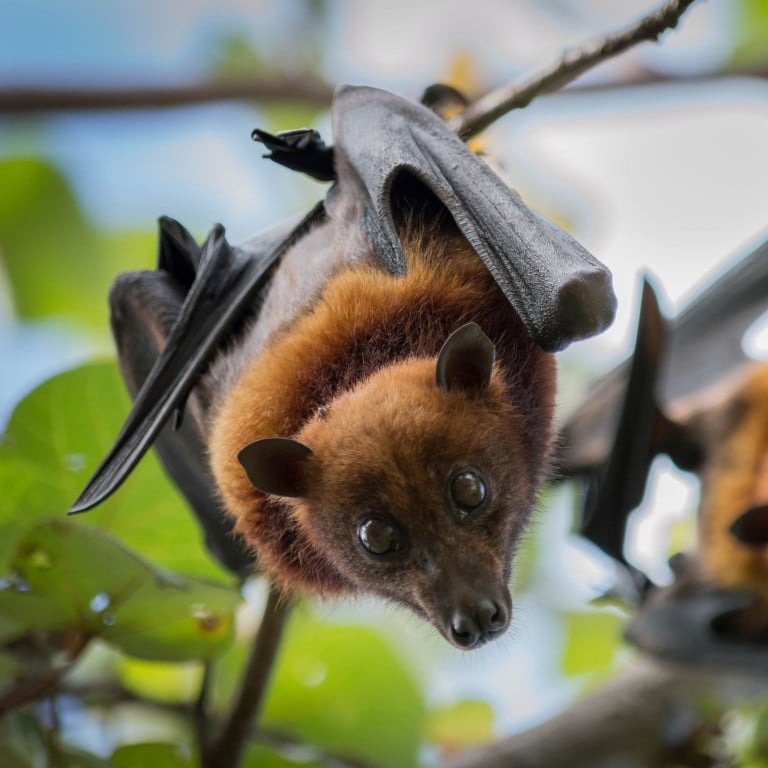
Coronavirus weaker than Sars but may share link to bats, Chinese scientists say
- Virus found in fruit bats is common ancestor of the two strains, study suggests
- New strain has unusually high ability to bind to a human protein, researchers calculate
The new virus shares a common ancestor with severe acute respiratory syndrome (Sars), in HKU9-1, a virus found in fruit bats, they found.
The connection with wild animals was confirmed on Wednesday by Gao Fu, director general of China’s Centre for Disease Control and Prevention.
According to Gao, the coronavirus, which has sickened more than 400 people across the country and led to nine deaths, originated from wild animals sold at a seafood market in Wuhan. Gao warned that a major challenge was that the new strain was adapting and mutating.
The scientists’ findings, published on Tuesday, suggested that the danger posed by the pneumonia-like virus may have been underestimated by the research community, and came a day after the Chinese government’s announcement of emergency measures to contain its spread.
A joint research team from the Chinese Academy of Sciences, the People’s Liberation Army and Institut Pasteur of Shanghai estimated how the viral strain would interact with cells in the human respiratory system using computer simulation based on released data.
“The Wuhan coronavirus’ natural host could be bats … but between bats and humans there may be an unknown intermediate,” the researchers said in a statement released with the paper.
China confirms 9 dead from coronavirus and 440 infected
Previously, most scientists believed the new virus could not cause an epidemic as serious as that of Sars because its genes were quite different.
But the new study found that, like Sars, the virus targeted a protein called ACE2.
According to their calculations, the binding-free energy between the virus and the protein would be minus 50.6 kcal per mol, five times what was “usually considered significant”.
“Although comparably weaker [than Sars], the Wuhan CoV S-protein is regarded to have strong binding affinity to human ACE2,” they wrote in a paper published on China Science Bulletin.
What surprised the scientists most, however, was that the virus could maintain the strong binding ability despite its significant structural differences from Sars. Of the virus’ five amino acids that play important roles in the binding process, four are different from those of Sars.
US hit by Wuhan coronavirus as first victim announced
Further examination of the virus’ structure showed that overall its binding protein had a high resemblance to that of Sars.
The researchers also traced the evolution of the new virus in a government coronavirus database. On the evolutionary tree, the new virus belonged to Betacoronavirus, on a close but different branch to Sars. The two shared about 70 to 80 per cent of genes, less than the similarity between pigs and humans.
Meanwhile, a senior researcher at the Wuhan Institute of Virology, which was not involved in the new study, told the South China Morning Post on Wednesday that the new strain was an RNA virus, meaning that its mutation speed was 100 times faster than that of a DNA virus such as smallpox. RNA (ribonucleic acid) molecules are simpler than DNA (deoxyribonucleic acid) molecules.
Taiwan tells people not to go to Wuhan amid outbreak
The researcher, who asked not to be named because of the institute’s media policy, said the new study should be treated with caution.
“It is based on calculation by a computer model,” he said. “Whether it will match what happens in real life is inconclusive.
“The binding protein is important, but it is just one of the many things under investigation. There may be other proteins involved.”
The Wuhan institute operates one of China’s most guarded biosafety laboratories. Researchers there are conducting experiments on the coronavirus, hoping to obtain a full picture of how it infects humans and which illnesses it can cause.
“We need a lot of samples, we need time and we need to make sure the results are correct,” he said.
China established an emergency response system after the Sars outbreak in 2003, but it was possible that laboratory work could not keep up with the new coronavirus’ mutations as it spread, the researcher said.

